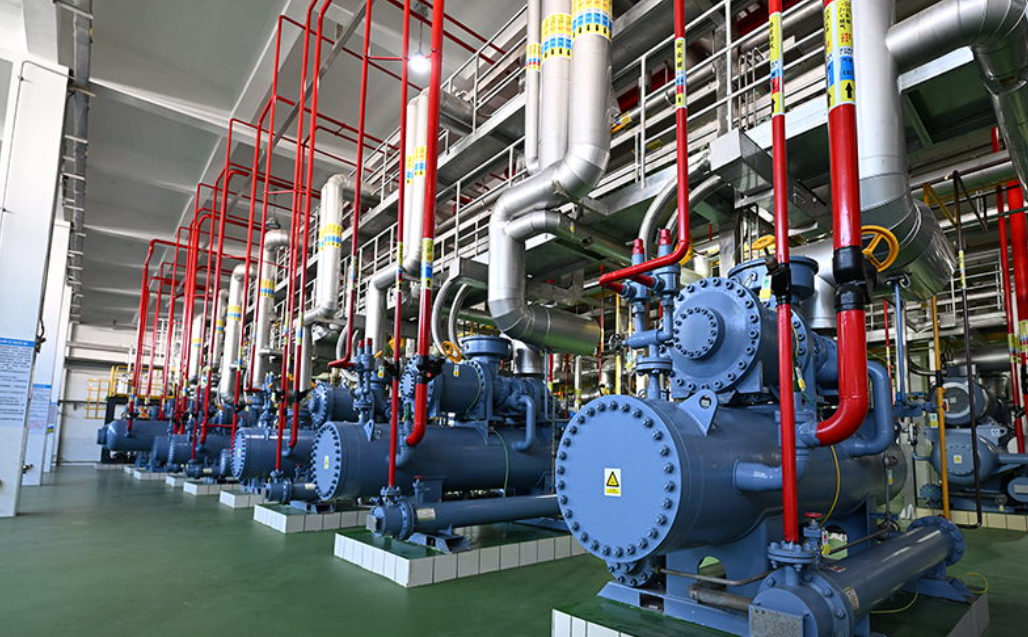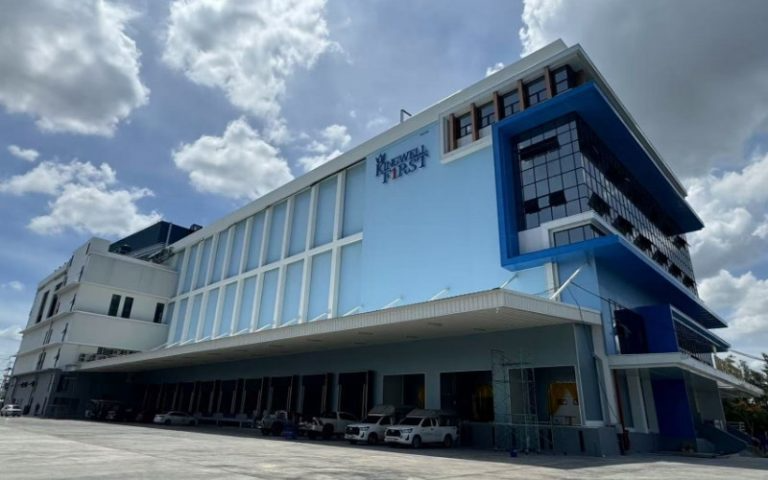Industrial refrigeration keeps food cold, runs chemical plants, and chills data centers, but safety and rules can’t be ignored. A leak or breakdown can stop work, hurt people, or lead to big fines. You need systems that follow global standards to keep things running smoothly. Check out MOON-TECH, a leader in refrigeration since 1956. With stock code 000811, this company covers cryogenic cooling, air conditioning, green heating, and more, reaching over 120 countries. Its nine global R&D bases and 263 patents show its knack for new ideas, from CO₂ systems to waste heat recovery. Known as a top name in China’s machinery world, it holds ISO9001, ISO14001, CE, and ASME certifications, plus awards like the National Science and Technology Progress Award. From freezing food to CCUS projects, their solutions bring safety and efficiency. This article looks at how refrigeration systems meet safety rules, giving you practical tips to keep your operations safe and legal.

Why Are Safety Standards Critical in Industrial Refrigeration?
Safety rules in refrigeration aren’t just forms to fill out. They protect people and your business. A single mistake, like a gas leak, can halt production or cause harm. Standards like ISO9001 and ASME set clear guidelines for equipment and operations, so your systems handle tough conditions. Following these rules also keeps you out of legal trouble and protects your company’s name.
Better Worker Safety
Workers face dangers like ammonia leaks or equipment breaking down. Systems with automatic ammonia detection, like in a 227,000-ton cold storage project in Guangzhou, spot leaks fast. And sturdy designs with rust-proof materials cut risks, keeping your team safe and sound.
Following Regulations
Rules from China’s energy-saving standards to Europe’s CE requirements are strict. Breaking them can mean fines or shutdowns. Equipment certified to ISO14001 and ASME, used in projects across 120 countries, helps you follow these rules easily, so you avoid headaches.
Reliable Operations
Safe systems last longer and work better. Equipment built to CRAA standards, with tough parts, cuts downtime. For instance, a seafood plant in Ecuador uses eight screw compressors for steady, round-the-clock work, so your operations stay smooth.
What Makes Ammonia-Based Refrigeration Systems Safe?
Ammonia’s great for cooling, but it’s toxic, so safety is a must. Modern systems mix ammonia with CO₂ in cascade setups, blending strong performance with protection. Projects like Thailand’s ASRS cold storage prove these systems are both safe and efficient.
NH₃/CO₂ Cascade Systems
A huge 304,000-square-meter cold storage in Guangzhou uses an NH₃/CO₂ cascade system with 24 compressor units and 1,083 heat exchangers. Ammonia gas sensors and automatic controls catch problems quickly. This keeps workers safe and systems stable.
Strong Safety Features
Screw compressor units, made with tight seals and rust-resistant materials, handle rough conditions well. In Brunei’s 50-ton/day ice plant, these designs keep ammonia locked in, lowering risks and making equipment last longer.
Meeting Global Standards
Systems that follow ISO9001, ISO14001, and CE rules match global safety needs. A Malaysia cold storage project, with ammonia compressors and water defrost systems, sticks to these standards, so you stay compliant no matter where you operate.
How Do CO₂ Refrigeration Systems Meet Environmental Regulations?
CO₂ refrigeration is popular because it’s kind to the planet. With global goals to cut carbon, systems need to lower emissions while staying efficient. CO₂’s green nature shines in projects like Thailand’s cold chain logistics.

Planet-Friendly Refrigerant
CO₂ systems, like those in a 300,000-ton Wuhan warehouse, cut emissions compared to HCFC-22. With 18 CO₂ units and 16 ammonia units, these systems follow UN rules for refrigerant swaps, helping you keep your operations eco-friendly.
Energy-Saving Designs
High COP designs in CO₂ cascade systems use less power. A Thailand project with NH₃/CO₂ refrigeration saves electricity, meeting China’s energy-saving goals. This lowers your bills while keeping things green.
Matching Global Certifications
CO₂ systems align with LEED and UN Multilateral Fund standards. With 560 CO₂ projects worldwide, cutting 800,260 tons of emissions yearly, these systems make it simple to follow international green rules.
Why Is Compliance Crucial for CCUS Systems?
Carbon Capture, Utilization, and Storage (CCUS) systems deal with CO₂ under high pressure, so following rules is vital. From oilfields to chemical plants, safe gas handling protects workers and the environment. A 65% market share in China’s CCUS equipment market shows these solutions work well.
Strict Gas Handling Rules
CO₂ compression at 1–6 MPa, like in the Zhongyuan Oilfield project, uses special screw compressors for safe work. Automatic controls manage pressure precisely, so you avoid risks in high-pressure setups.
Sticking to Regulations
China’s carbon neutrality goals need strong CCUS systems. A 150,000-ton/year CO₂ liquefaction plant, recycling chemical tail gas, meets these targets, so you stay compliant and cut emissions.
Safety in High-Pressure Work
High-vacuum tanks and cooling loops, used in Russia’s 40,000-ton/year CCUS project, keep CO₂ at -30°C to -55°C safely. These systems help you meet tough safety rules without worry.
How Do Industrial Valves Enhance System Safety?
Valves might not get much attention, but they control refrigerant flow and stop leaks. Top-notch valves, working with ammonia and CO₂, are key for safe, smooth operations in industries like food processing and petrochemicals.
Top-Notch Valve Design
Valves with leak-proof seals, used in chemical cooling, stop refrigerant from escaping. Their strong build handles high pressures, keeping your systems safe and dependable.
Works with Many Refrigerants
Valves that support ammonia, CO₂, and non-corrosive gases, like in salt chemical projects, keep systems solid. This flexibility means your refrigeration setup runs well in different conditions.
Long-Lasting Reliability
Rust-resistant valves, used in PVC production, last a long time. They handle tough environments, so you spend less on maintenance while keeping safety first.
What Role Does Automation Play in Ensuring Safety?
Automation makes refrigeration safer by catching problems early. From live monitoring to remote controls, smart systems keep your operations secure and efficient, as shown in projects like Malaysia’s cold storage.
Smart Control Systems
Centrifugal chillers with CCS TOUCH systems, used in data centers, track performance in real time. These user-friendly setups spot issues fast, protecting your equipment and workers.
Remote Control Options
A Malaysia project with ammonia refrigeration uses remote monitoring for starting, stopping, and adjusting temperatures. This cuts on-site risks, letting you manage systems safely from a distance.
Fewer Mistakes
Automated valves and compressors, like in a 104,000-ton seafood facility, reduce human errors. Precise control keeps performance steady, so your operations stay safe and compliant.
How Can Businesses Stay Compliant Over Time?
Staying compliant isn’t a one-off job; it’s ongoing. Regular maintenance, training, and upgrades keep your refrigeration systems in line with changing rules, saving you from costly fines.
Routine Maintenance Services
Service programs with 24/7 support, offered in 120 countries, keep systems running well. Regular checks find problems early, so you stay compliant and safe.
Training and Support
Training for staff, like in Ecuador’s shrimp processing plant, teaches safe equipment use. Skilled teams lower risks and keep up with regulatory standards, giving you peace of mind.
System Upgrades
Upgrades, like heat pump distillation in a 23.4 MW refining project, align systems with new rules. These changes save 40 million RMB yearly and cut 79,530 tons of CO₂, keeping you compliant and efficient.
FAQ
Q1: What risks come with ammonia-based refrigeration systems?
A: Ammonia’s toxicity can harm workers if it leaks. Systems with gas sensors and automatic controls, like in Guangzhou’s cold storage, catch leaks fast, keeping things safe.
Q2: How do CO₂ systems help follow environmental rules?
A: CO₂ systems cut emissions, matching UN and LEED standards. Wuhan’s 300,000-ton warehouse, with 800,260 tons of CO₂ saved yearly, shows how they work.
Q3: Why is CCUS compliance so important?
A: CCUS deals with high-pressure CO₂, needing strict rules. Systems like Zhongyuan Oilfield’s keep things safe and meet China’s carbon goals.

